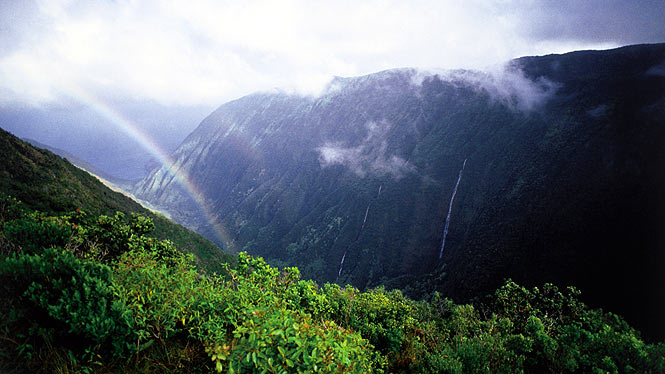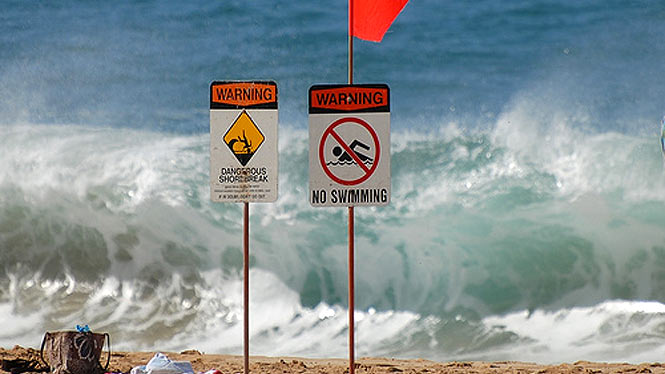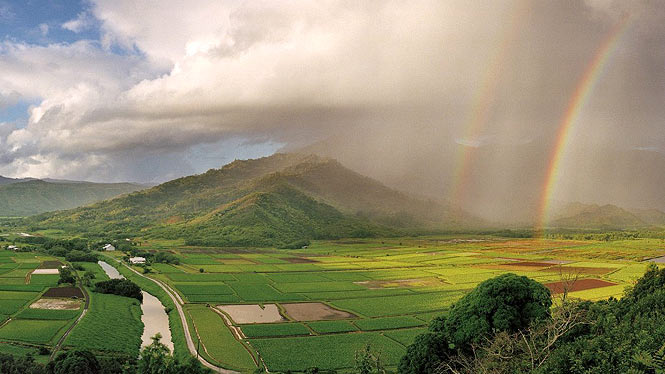
If singer/songwriter Carole King had spent her entire life in Hawaii, her classic “You’ve Got a Friend” would never have been penned. It’s hard to write about “winter, spring, summer or fall” when you live in a place where each season seems to blend seamlessly into the next.
Seasons
Basically, Hawaii has only two seasons—summer and winter—and the weather conditions are fairly consistent year-round. In fact, you’re more likely to find temperature variations between elevations and coast exposures than you are between traditional seasons. For example, Hilo on the Big Island of Hawaii is one of the wetter places in the state. On the opposite side of the island, however, Kona is usually arid, warm and full of sunshine.
Dangers

Winter season brings dangerous wave conditions to the north shore
The winter season does bring dangerous wave conditions to the north shore of the islands, and novice surfers and swimmers are advised to stay out of the water.
Hurricane Season
Hurricane season in Hawaii is from June through November. The last major hurricane here was Iniki, which blistered the island of Kauai in 1992.
Temperatures
Temperatures in Hawaii range from the mid-70s to the mid-80s for most of the year. The mercury dips into the 60s during the winter months and rises to the mid-90s in the summer.
The highest temperature on record in the Aloha State is 100 degrees F, on August 27, 1931, in Pahala on the Big Island. The lowest temperature is 12 degrees F, recorded at the 13,770-foot elevation level of Mauna Kea on the Big Island on May 17, 1979. Hawaii is the only state in America that never to have recorded a below-zero temperature.
Wet Season

Hawaii’s “wet” season generally starts in November, but the rains aren’t usually long enough to spoil a vacation. (Locals often refer to these passing showers as “liquid sunshine.”) Rainfall over the waters near Hawaii averages between 25 and 30 inches a year. The islands receive as much 15 times that amount in some areas and less than a third of it in other places.
What to Wear
You’ll want to dress for comfort in the Islands: T-shirts, shorts, jeans, tank-tops, sundresses are appropriate to wear for Hawaii’s climate. Pack a light jacket for the cooler evenings. Sunglasses and visor are recommended to protect you from the sun. Remember that excessive exposure to the sun’s rays can be harmful. Sunscreen is a must for visitors of every age.
Overall, Hawaii’s weather is delightfully mild, with moderate humidity and gentle trade winds. Enjoy the sunshine!